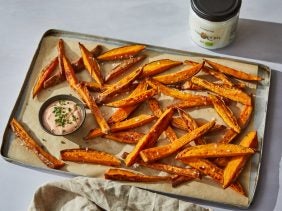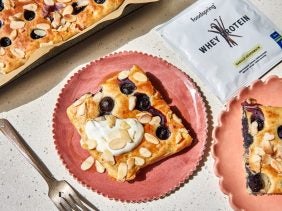Pistachio—So Much More Than a Superfood
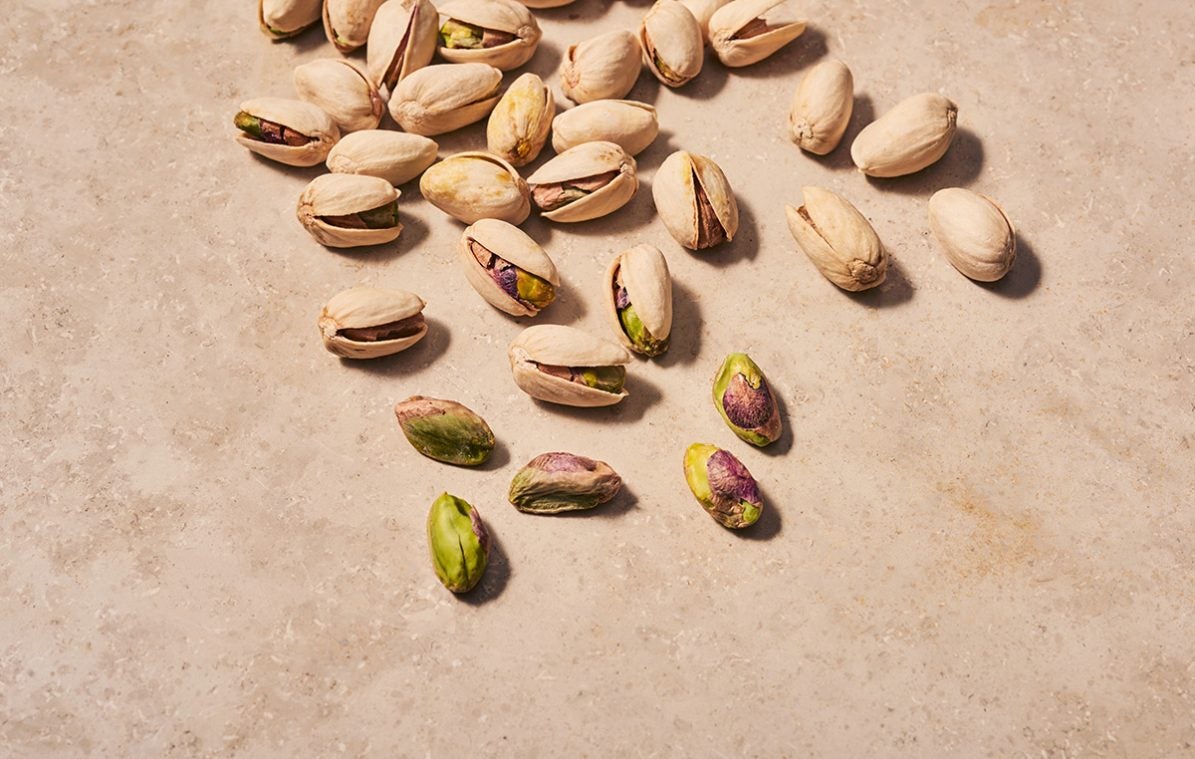 ©foodspring
©foodspring
Once you start, you just can’t stop: pistachios are too tasty. Whether it’s as a topping on your oatmeal, roasted and salted as a snack, or as a filling for pastries: we love a pistachio in any form! Although these green kernels are anything but low fat, they are rich in protein, fiber, and important micronutrients. Let’s get into everything you need to know about its origins, nutritional values, and health benefits – with tasty recipes for everyone!
Pistachios, like cashews, belong to the sumac family. So botanically speaking, they aren’t a nut, but a seed instead.
These small kernels grow inside clusters of fruits on deciduous trees and are covered by a hard shell. Originally this stone fruit comes from the Middle East, today the largest producers are in Iran, Turkey, and the USA.
Harvest time begins in September which means that fresh pistachios are available throughout the winter. Thanks to modern food preservation techniques, they’re available all year round packaged as a salted and roasted snack, as a spread in a jar, or finely chopped in baked goods. Pistachios taste sweet and nutty and have a refined, buttery aroma. This makes them the perfect topping for both sweet desserts as well as savory items like soups and salads.
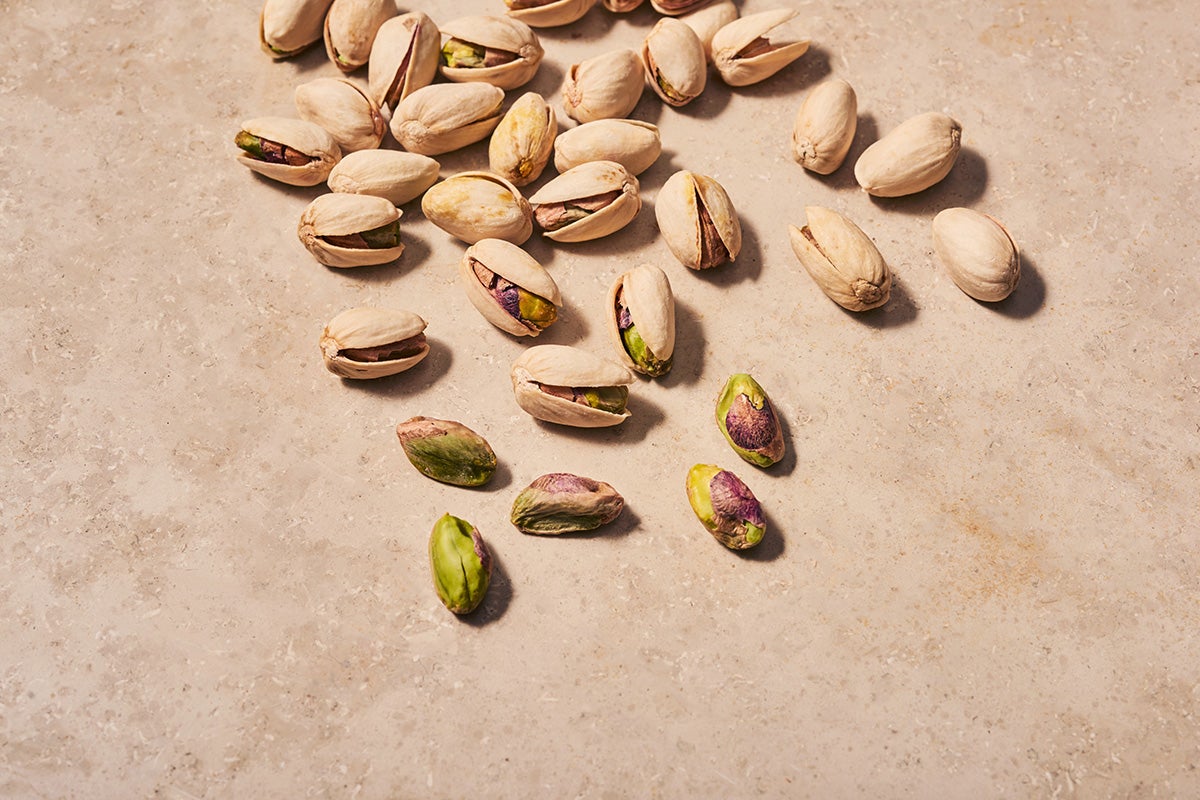
Pistachios: Nutrition Facts
Don’t let their size fool you: pistachios are packed with energy. 100 grams contain 580 calories and more than 50 grams of fat. But don’t start worrying just yet, because it’s mostly unsaturated fats. According to the NHS, we should eat more unsaturated fats than saturated fats in order to reduce our risks of heart disease and stroke.
It’s also important to note the pistachio’s protein content of around 20 percent and its relatively high ratio of dietary fiber. Pistachios also contain vitamins B, A, and E, as well as plenty of iron, potassium, and calcium. Find out more about these essential minerals here.
Pistachio nutrition facts per 100g:
| Calories | 581 |
| Protein | 17.6 g |
| Fat | 51.6 g |
| Carbohydrates | 11.5 g |
| Fiber | 10.6 g |
| Potassium | 1020 mg |
| Calcium | 136 mg |
| Magnesium | 158 mg |
| Phosphate | 500 mg |
| Sodium | 10 mg |
| Iron | 7.3 mg |
Following a vegan diet? Check out our Vegan Protein – for anyone who wants to build muscle with nothing but plant power.
Are Pistachios Healthy?
The small green kernels are real heavyweights when it comes to fat and calorie content. That’s why you should always eat them in moderation. On the positive side, they are high in unsaturated fats, especially omega-6 fatty acids, which are said to help keep cholesterol levels in balance. If you eat pistachios regularly, make sure you also get enough omega-3 fatty acids. These can be found in vegetable oils like linseed oil, as well as walnuts and salmon.
Another plus point is their high fiber content, which can help you feel fuller longer and keep your digestion on track. Pistachios don’t skimp on protein either, so they’re perfect for athletes paying attention to a diet high in protein and carbs. We’ll also point out that pistachios contain many important vitamins and antioxidants.
Can Pistachios Help Me Lose Weight?
It sounds almost too good to be true: A study from the US has confirmed that eating pistachios can help you lose weight! Over four months, overweight participants were given 42 grams of pistachios per day. A control group snacked on other salty snacks instead. The result: those who consumed pistachios daily were able to reduce their waist circumference and BMI more than the control group. One of the reasons behind this effect is that pistachios have a high satiety level, so you’re less likely to keep going and eat other snacks. On top of that, some of the fats they contain pass through your system without being digested.
Due to their high calorie content, however, you should eat pistachios sparingly or leave out other foods if you want to lose weight. Because, to lose weight successfully, you have to maintain a calorie deficit. This means that you have to consume more calories per day than you take in through food. A mix of a balanced diet and exercise can help you achieve this. According to the NHS, healthy and sustainable weight loss is based on a positive change in your eating habits and getting active. Their recommendation: eat a balanced diet and find a type of physical activity you enjoy!
Learn more about losing weight here: Get in shape the healthy way.
Buy and Store Your Pistachios Right
Quality is crucial when it comes to pistachios. If you buy cheap products, there is a higher chance that the kernels are contaminated and could be harmful to your health. That’s why it’s better to buy high-quality pistachios that are relatively fresh. The greener the kernels, the better. On the other hand, if they smell funny or look old, leave them on the shelf.
Store pistachios at home in airtight packaging. Shelled kernels will keep in the refrigerator for up to four weeks. If they’re still in the shell, they can be kept in a cool, dry place for several months. You can also freeze pistachios and snack on them for up to a year.
Pistachio Recipes
Only ever munched on roasted and salted pistachios? It’s past time you expand your culinary horizons. These little green kernels are more versatile than you think! They’re perfect as a topping for oatmeal and ice cream, or even nice cream. And of course, they’re great for cookies and cakes. Pistachios can even add new dimensions to bowls, soups, and salads.
Our tip: Chop up these fresh kernels into small pieces to release their delicious nutty-buttery aroma. Roasting them quickly in a dry pan also adds an extra kick of flavor! Here’s four of our absolute favorite recipes with pistachios:
Blueberry Protein Porridge
It’s easy to start your day on the right foot with our Protein Porridge. One bowl of this protein-packed oatmeal and you’re ready for any challenge! Add new color and flavor dimensions to your breakfast with a handful of blueberries and pistachios as a topping. The extra ingredients not only add color but also plenty of good nutrients to boot.
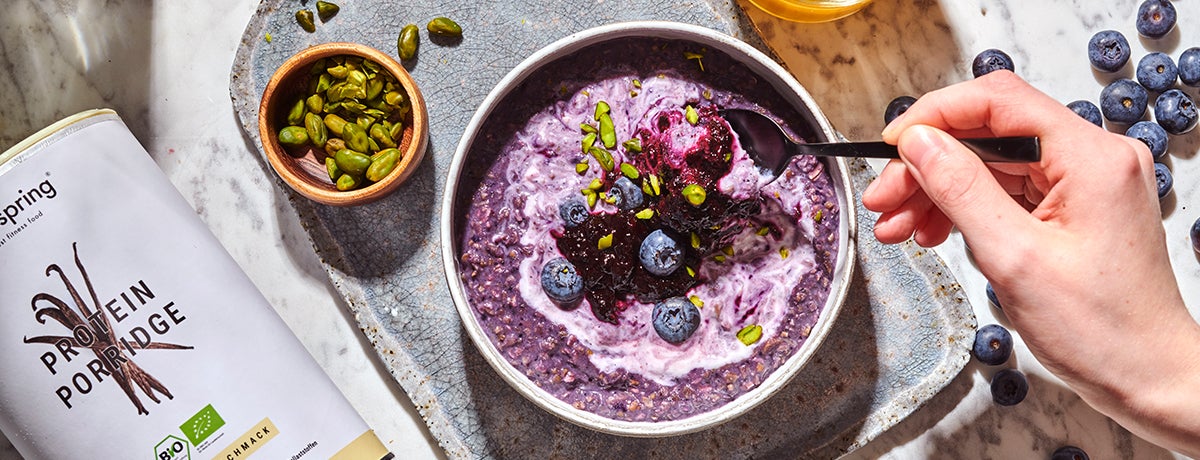
Pistachio Thumbprint Cookies
Don’t say we didn’t warn you: these cookies are addictive! The pistachio puree that tops these unique creations is just too perfect. Not only is it super creamy, but it also packs a delicious nutty flavor. A real must for anyone with a sweet tooth who doesn’t want to miss out on good nutrients!
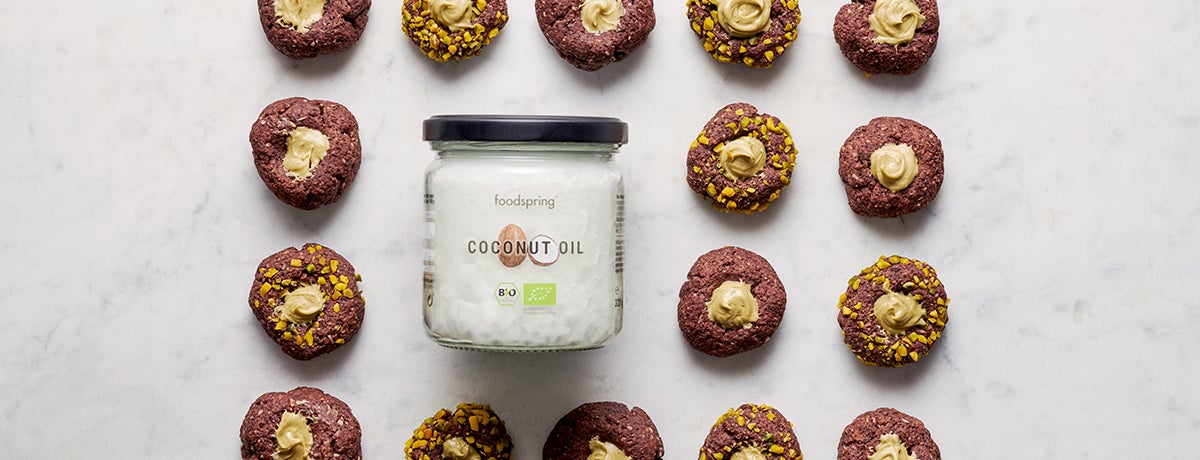
Beetroot Tartare
The color combination of green pistachios and red beets is eye-catching at any time of year! As a tartare, beet is a surprising, high-protein appetizer that tastes fantastic. The pistachios add depth to the bread and color to the topping in our tasty and easy recipe.
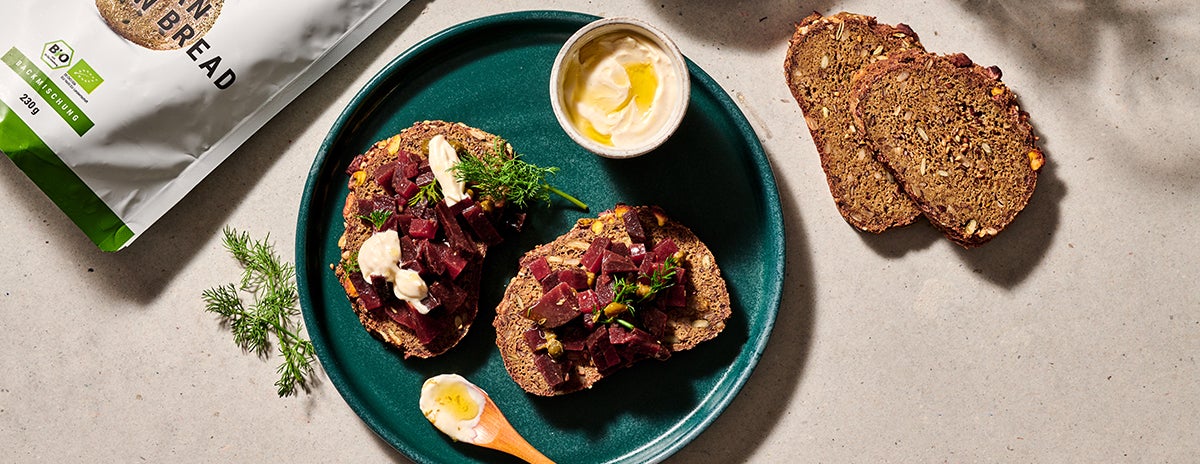
Protein Ice Cream Cups
Sugar-free and made in a snap: Our Protein Ice Cream in fluffy pancake cups is a perfect refreshing snack for in-between meals or for dessert! The great thing for your nutrition plan is that our ice cream is not only sugar-free but also low in fat. And with a few pistachios as a topping, this sweet treat is simply unbeatable!
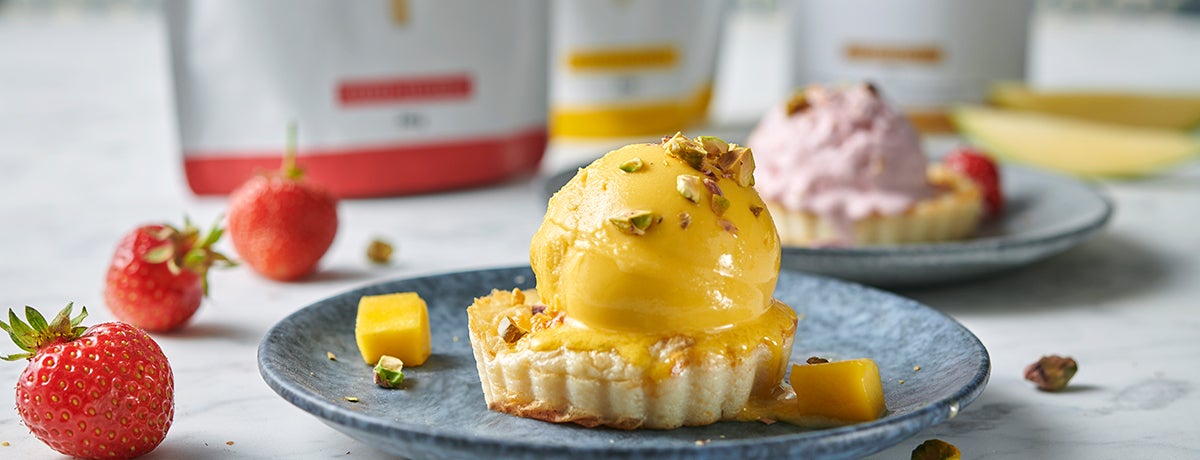
More healthy living tips from foodspring:
- Sure, They’re Delicious, But Are Peanuts Good For You?
- Protein Cream: probably the most delicious dose of protein you’ll ever lick off a spoon
- What are Macros? Learn more about the nutrients your body needs
* In comparison to a standard pistachio spread.
Sources for this article
We at foodspring use only high-quality sources, including peer-reviewed studies, to support the facts within our articles. Read our editorial policy to learn more about how we fact-check and keep our content accurate, reliable, and trustworthy.





























